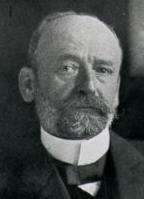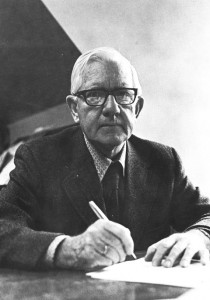The idea to study how ancient Mesopotamian cuneiform culture was connected to other cultures may seem obvious. We all know about the cultural importance of the Greeks who lived near there and the Arabs who conquered Mesopotamia, so why not find out what they got from Mesopotamia? Surprisingly, however, this question has received very little attention, and was often considered controversial when it did. The ‘trouble’ begun when the English assyriologist George Smith completed his translation of what he called ‘The Chaldean Account of the Deluge’. First read at a high-profile meeting in late 1872 (the audience included the British Prime Minster W.E. Gladstone) and then published in the Transactions of the Society of Biblical Archaeology in 1873, the text speaks of a great flood, which was survived by just one family and all species of animals, who had taken shelter in a boat. Both regarding the general narrative and specific details of the story, the similarities with the biblical story of Noah are obvious. (We know now that the text Smith translated is in fact Tablet 11 of the so-called Standard Babylonian Version of the Gilgamesh Epic, in which Utnapishtim, the story’s Noah, tells Gilgamesh what happened.)
Scholars as well as the general public rushed to this and other texts to have a closer look at the similarities, and find out what they meant. In a world still much more religious than ours, this was bound to lead to heavy discussions. The most explosive of these was caused by a 1902 lecture given in Berlin by the prominent assyriologist Friedrich Delitzsch, called ‘Babel und Bibel’. In his lecture, which was another high-profile occasion, this time including the German emperor Wilhelm II, Delitzsch argued that Judaism and the Old Testament in large part derived fromMesopotamian traditions. This led to a heated discussion in Germany, both in public and in scholarly circles, which raged on until both World War I and changes in academic interests and approaches diverted attention elsewhere. In the meantime, however, a theory known as ‘Panbabylonism’ had appeared. It claimed that not only Judaism and the Old Testament, but also large parts of other ‘Western’ culture, ultimately derived from ancient Mesopotamia. Although never very popular, this school of thought placed a stigma on research on Mesopotamian cultural influences, which was now considered a topic only interesting for what could be called the scholarly variant of conspiracy theorists, i.e. people who see connections everywhere.
A few decades in the shades followed for our subject. The person responsible for getting it back into the light was the German hittitologist Hans Gustav Güterbock. In the 1930s, Emile Forrer, a Swiss scholar working in Berlin at the time, had discovered a Hittite text that bore strong similarities to the Theogony, a didactic poem about the creation of the gods and their fights for kingship ascribed to the Greek poet Hesiod. Although Forrer published a few articles on the subject, it really caught the limelight only when Güterbock published a full edition of the Hittite text in 1946, followed by a more widely accessible article in the American Journal of Archaeology in 1948. This text pointed out once again that Greek culture had not developed in isolation, but somehow had been in contact with surrounding cultures and had taken over elements from them.
Inevitably, some outlandish claims followed again, with scholars claiming in Delitzsch-esque style that Greek culture was largely derived from the Near East. Although this, too, did the field more harm than good, it could not stop scholars from continuing to explore the links between Greek and Near Eastern culture. The real breakthrough to mainstream academic research followed in the 1980s and 1990s. Various publications and scholars could be mentioned, but most important were a number of high-profile books and articles by the respected classicists Walter Burkert and Martin West. These put the subject of Near Eastern influences on Greek culture on the academic map as never before, which has since been further charted without pause by scholars from around the world.
Positive as this may sound, a few problems remain. First, many people are not quite ready to see Greece as being ‘just’ another part of the ancient world, connected to other areas as any region was. Ever since the Renaissance, Greco-Roman Antiquity has been seen as a special period in time, the first highpoint in history, and the alma mater of modern Western civilization. For some, the idea that the Greeks would have developed their culture in constant exchange and interaction with others represents an unacceptable challenge to their views, an attitude which continues to hamper research. Second, with all this talk about Greece, there has been little focus on the cultural position of Mesopotamia in the ancient world, except as a possible cultural feeding ground for the Greeks. And third, there has been even less attention for the cultural importance of Mesopotamia outside Greco-Roman Antiquity. Hence, extremely few studies investigate the appearance of elements of Mesopotamian culture in Iran in Parthian and Sassanian times, or in Arabic culture after the Islamic Conquest of the Near East.
This, then, is where the IHANE Project comes in. Actually, to understand its position we should go back to a little bit before its foundation. In 1999, the Melammu Project was founded by the Finnish assyriologist Simo Parpola. Recognizing the very same problems as outlined above, Parpola envisioned the creation of a project that would unite scholars interested in the question of Mesopotamia’s cultural importance, who could exchange ideas through a website and, especially, regularly organized meetings. Six such meetings have been held so far, and the seventh will take place in Austria in November, as was described in an earlier post on this blog. IHANE is closely related to Melammu: IHANE was founded by Jaakko Hämeen-Anttila and Robert Rollinger, two scholars first brought together by Melammu, and makes use of academic networks laid out through the various Melammu meetings. Nonetheless, through its focus on the connection between Mesopotamian and Arabic culture, IHANE also adds something new and vitally important, as the Arabic world so far has not featured very much in the Melammu activities.
And that’s where we are now! Hopefully, IHANE (and Melammu) can contribute its part to the history of research, so that a similar blog written twenty years from now will be able to remark how the foundation of the project helped create a sustained, serious interest in the cultural influence of ancient Mesopotamia!
Dr. Erik van Dongen, Part-Time Professor
Department of Modern Languages and Classics
Saint Mary’s University




